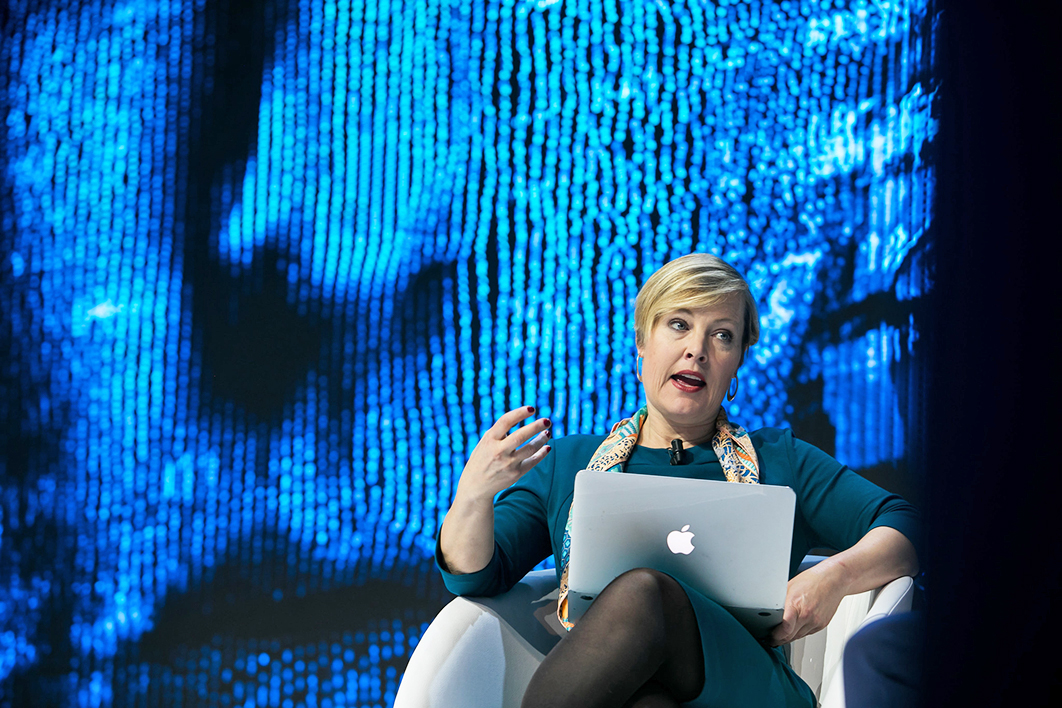Last month vice-chancellor Amit Chakma announced that the University of Western Australia’s anthropology discipline would be “discontinued” to help deal with a pandemic-driven funding shortfall. Implicit in his announcement was the belief that anthropology’s concern with exotic societies leaves graduates with relatively few employment opportunities. If Professor Chakma wants a counterview, he need only turn to journalist Gillian Tett’s new book, Anthro-Vision: How Anthropology Can Explain Business and Life. Tett believes anthropological insights and ethnographic methods are “vital for the modern world,” a contention exemplified by her long and distinguished career at the Financial Times.
One of Tett’s colleagues once queried the relevance of her doctorate on marriage rituals in Soviet Tajikistan to her work at the FT. Using this as her starting point, she demonstrates how anthropology provided the training and intellectual framework she needed to scrutinise banking, business corporations, factories, international industrial collaboration and technological change.
It’s important to bear in mind that Tett is famous for being one of the few people to predict the global financial crisis — several years before it occurred, in fact, after she became alarmed by the peculiarities of capital markets, derivatives and securitisation. Following her instincts, she began exploring the culture of banking and finance using standard ethnographic methods.
First she learned the language. Banking jargon is replete with terminology that is almost impenetrable to outsiders. CDO (collateralised debt obligation) and CDS (credit default swap) mean little to a person taking out a mortgage, as does the fact that their debts might be “bundled” with others and “sold on” to investors. In her efforts to discern the patterns created by these exchanges of risk and debt, she discovered a clash between what these innovations were meant to achieve for banks — reduced debt — and what appeared to be happening — increased debt. The predicted “market correction” was simply not happening. “Risks,” she wrote, “were building inside this strange, shadowy world.”
Although she was accused of scaremongering and her characterisations of the financial world were heavily criticised, Tett was undeterred. Her methods required the ingenuity that is essential when studying powerful people and their institutions. She attended conferences, interviewed people, read a great deal, and generally immersed herself in the culture. All the while she was maintaining a critical eye, looking out for gaps in the narrative, for contradictions between what people said and how they behaved.
Describing her fieldwork in Anthro-Vision, Tett questions widely held assumptions about the “natural” functioning of market forces and exposes the fanciful reification of money and its exchange. She reveals how bankers and financiers can effect economic change in complex ways, and how and why impending financial disasters can sit comfortably in their blind spots.
To show another way of working within large organisations, Tett describes how Genevieve Bell, now the distinguished professor in ANU’s School of Cybernetics, broke new ground after she joined Intel’s research division in 1998. Bell began by launching a cross-cultural study of consumers in India, Australia and Malaysia, where her band of researchers discovered that people used their technological devices very differently from how their designers envisaged.
Other comparative research into facial recognition and artificial intelligence applications has found striking differences between attitudes, behaviour and use in the United States and China. Americans tend to see them as a form of invasive surveillance that threatens their privacy and personal freedom; Chinese people are generally more comfortable with scrutiny, viewing it as a form of state-endorsed security.
On the urgent topic of how best to manage contagious diseases, Tett argues for cultural sensitivity by telling the story of how Ebola was eventually contained in Sierra Leone, Guinea and Liberia. The early assumption was that people’s behaviour would change if they understood how Ebola is transmitted, and attended medical facilities immediately symptoms developed. Quite apart from the difficulty of getting treatment within an underdeveloped healthcare system, Ebola continued to spread because people could not abandon their customs surrounding death and burial. Family gatherings, at which the deceased’s body would be embraced, were a major factor that simple prohibition failed to stop.
Tett describes how Paul Farmer, a medical anthropologist at Harvard who heads Partners in Health, had for decades advocated community-based treatment that respects local cultures and social context. The advice he and other anthropologists provided to hospitals and health centres had a dramatic impact on the spread of the disease.
To date, Tett observes, anthropologists have had little influence over how Covid-19 has been managed. Attitudes towards face masks, and ideas about family gatherings and religious rituals vary greatly, yet policies have generally been top-down, informed almost entirely by medical scientists. Technical solutions, such as contact-tracing applications for mobile phones, haven’t prevented people from transmitting infection (although the use of QR codes to track people’s movement, at least in Australia, provides the means for isolating contacts after the event).
Rational measures derived entirely from medical science might seem simple, but cultural understandings of certain practices are constructed within “webs of meaning” that privilege some human actions over others. Thus, kissing the corpse and sitting in a small room with other mourners are intrinsic to West African ideas of honouring the dead. Failure to do so invites opprobrium and disaster. Thus, too, British prime minister Boris Johnson initially refused to don a face mask, even while exhorting other citizens to do so, because masking has negative connotations and is “foreign,” and controlling what British people wear infringes their individual rights. In London or Sydney, refusing to wear a mask can be considered an act that demonstrates individual autonomy and freedom — cultural ideals that not only are seen as natural in a liberal democracy but are also more highly valued than responsibility to others.
Anthropological techniques are obviously useful in market research, and many of Tett’s examples illustrate the complex interweaving of cultural assumptions, social values and consumer choice. She shows how widely anthropological research is used in the United States and how different ethnography is from surveys that simply collect factual data and make correlations based on categories such as age, gender and political allegiance.
Anthropologists investigate why people make choices, and much of the complexity they identify derives from the fact that social values change. Tett offers the case of a childcare company that asked anthropologist Meg Kinney to find out why enrolments were so much lower than rates of website searches — what was deterring interested parents from enrolling? Conventional data showed how parents were using the website, but didn’t explain why they failed to pursue the matter. Using video ethnography, Kinney observed parents in their home discussing the services offered. She found that the people designing childcare programs, mostly born before 1975, placed far more emphasis on education and reassurance than did “millennial” parents, who wanted their children to be adaptive and resilient.
Tett also explores how environmental sustainability and the challenge of climate change have transformed corporate notions of moral responsibility. She discusses the strategies of ESG (environment, sustainability, governance) that BP and other corporations have embraced in response to criticism, but points out that the persistence of the profit motive means that many changes are made with an eye to the market advantage that derives from being “green.” This is hardly a novel anthropological interpretation —many activists have been alert to “greenwashing” for decades — but Tett moves the argument along by bringing in her earlier work on financial organisations, which prompts the insight that “the words around ESG are changing the money flow” in positive ways.
Anthro-vision is written for a general readership and aims to convince people in the worlds of business and industry of the value of anthropological research. Tett does acknowledge that the information and insights an anthropologist can offer are not always the ones hard-headed business figures might want to hear. Anthropological advice to mining companies can certainly fall on deaf ears in Australia, where disasters such as the destruction of the cave at Juukan Gorge in Western Australia testify to the fact that anthropological knowledge continues to be seen as either irrelevant or obstructive to modern business practice.
In a postscript to anthropologists, Tett concedes that many anthropologists would rather not engage in research that enhances business operations, perhaps enabling them to increase profits and power in a profoundly unequal world. But she also emphasises the advantages of influencing policies that can promote change based on the recognition of both common humanity and cultural diversity. At a time when the social sciences and humanities are in the firing line in universities across Australia, her conclusions about the value of anthropology are particularly germane. •
Anthro-Vision: How Anthropology Can Explain Business and Life
By Gillian Tett | Random House Business | $35 | 282 pages




